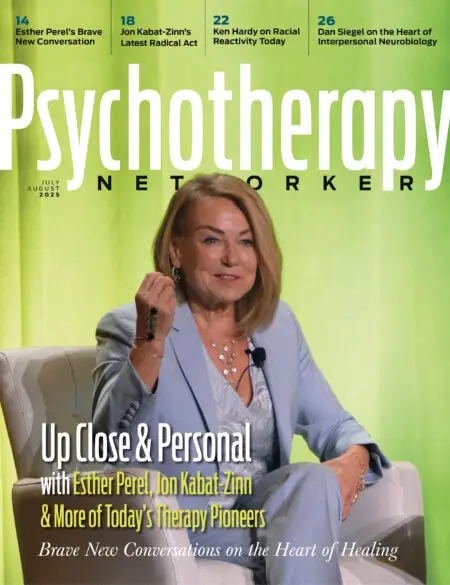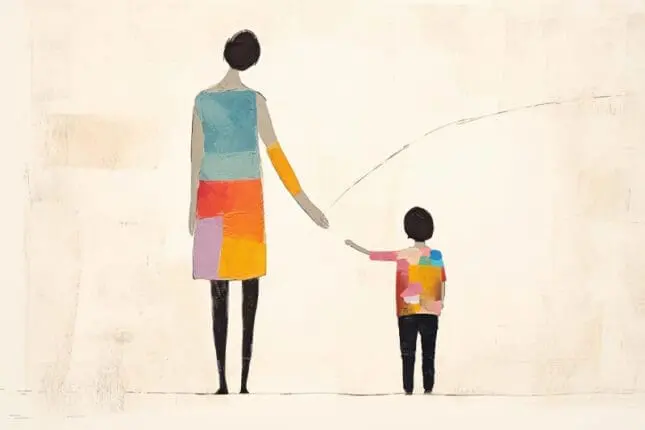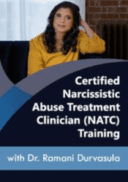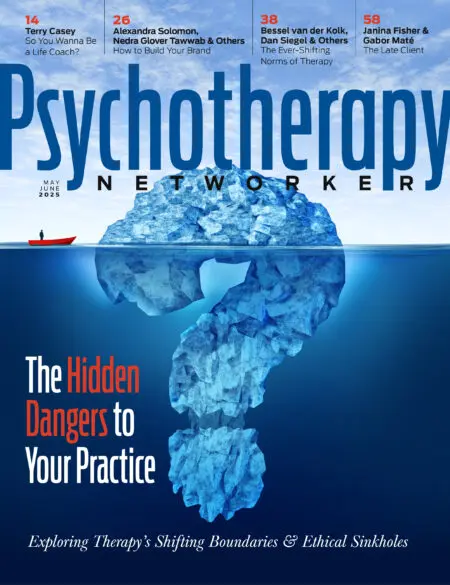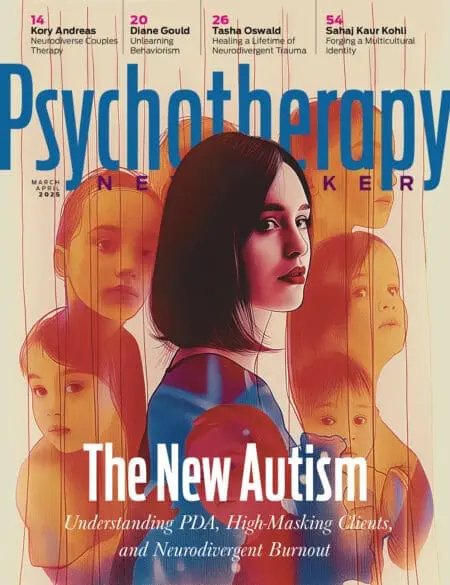Dani’s birth was harrowing. Even in my fog, as I fought to stay conscious during a terrifying episode of hemorrhaging, I thought her crying seemed anxious as she took her first breaths. When we finally made it to the recovery room and she was in my arms, I was dismayed to see that she looked like she’d been through 10 rounds of boxing. Her nose was smushed to the side, and her face was splotchy.
At home, I sat propped up in bed for days as my mom plied me with my only food request: white bread, Duke’s mayo, and sliced bananas. I felt weak from blood loss and only moved to gingerly make my way to the bathroom or kitchen before collapsing back into bed.
The baby cried a lot, and I felt like crying, too. Breastfeeding was difficult, and I wondered if she was getting enough milk. Friends and family who came to visit filled our ears with suggestions to ease her crying. None of them worked, and we felt helpless and lonely.
Envy and Loneliness
I joined a first-time moms support group, and it soon became clear that I was struggling with the experience of motherhood more than everyone else there. At the time, I couldn’t figure out exactly why, but it felt like a fundamental failure on my part as a mother. Dani seemed to cry more than the other babies. She was difficult to feed. She wouldn’t sleep for more than a few hours at a time, no matter how many different approaches we tried.
But the part that felt the worst was not being able to comfort her. If the cradle of my arms wasn’t enough to make her feel content, then what was wrong with my arms? If the sound of my voice wasn’t a balm, then what was wrong with my voice? If breastfeeding wasn’t soothing, then what was wrong with my milk?
My closest friend at the time was Deby, a first-time mom 10 years my senior with an affinity for using the f-bomb. Her daughter, Jac, was just a few weeks younger than Dani. From the moment we met, I decided she was doing everything better than me. Jac slept better, cried less, ate better, and even seemed to babble more than Dani. If Deby didn’t know the solution to a problem, she’d find it. I couldn’t seem to solve any of my problems.
Deby and I lived in downtown D.C., and our apartment buildings were a couple of blocks apart. After every sleepless night, when my husband would leave for work and the door clicked shut behind him, I’d feel a twinge of panic rise. How would I make it through the day? But then Deby would text: “Meet me downstairs at 8?” And we’d push our strollers around the streets for hours.
It felt like a victory just to leave the house, but I was on edge the whole time, bracing myself for when the crying would start. I could see the empathy in Deby’s eyes as she watched me struggle. She was always ready with a possible solution to whatever meltdown would inevitably occur, but after a while, I began to rebuff her suggestions. In fact, her affectionate nickname for me was “rebel without a cause.” Nothing worked.
Around this time, I noticed a dark seed of envy had situated itself in my heart. Deby’s baby wasn’t necessarily “easy,” but there always seemed to be a reason for her crying. Slowly, a chasm started growing between me and the other moms I knew—moms who were amazing, intelligent, funny, caring. They were friends anyone would want in the throes of a life challenge, but I still felt myself retreating from them.
The Gray
As Dani transitioned into toddlerhood, my husband and I noticed that nearly all our attention was focused on her. Knowing this dynamic wasn’t healthy for any of us, we decided to expand our family in the hopes that it would help bring a sense of balance to our lives. But eight months into my second pregnancy, I began slipping into a deep depression. As a therapist, I knew I needed therapy, and I was fortunate to find someone who’d become my touchstone.
“I don’t know why I’m so depressed when we’re really excited for this baby,” I often said to her, only to have her point out that it made sense given how challenging my motherhood journey had been so far.
I wish I could say we spent most of our time working on how I could better manage my emotional reactivity and anger, but in most of my sessions, I had trouble accessing my prefrontal cortex, organizing my thoughts, and getting words out in a cogent manner. Sometimes I just slumped over the arm of her couch and cried, despairing that I was a terrible mother and wife.
“That’s the depression talking, Anne. It’s not true,” she’d say.
I relished every minute I could remain cocooned in her office, rather than out in the world facing the relentless onslaught of unsolvable challenges that accompanied motherhood. In the midst of the ever-present depression I referred to as “The Gray,” I soaked in her calm, steady presence. When the depression intensified, my irritability, weepiness, appetite swings, sense of impending doom, social isolation, and feeling of being a burden worsened. I called this “The Pit.” My therapist’s steady, caring presence and gentle prodding to try medication got me through this time. On the hardest days, she’d say, “If you can’t walk to my office, crawl.”
Bin O’ Beans
When Dani was three, a friend suggested I consult with an occupational therapist, who promptly diagnosed her with sensory processing disorder (SPD). It’s now painful to read what I wrote to friends and family at the time: There’s a great degree of relief that comes with this new information. We finally have a path to follow. The good news is that occupational therapy once or twice a week, combined with activities we can do at home, will have a significant impact on her symptoms. The occupational therapist thinks we’ll see a whole different child in just a few months.
Nothing could have been further from the truth.
I adored the occupational therapist, but we saw no clear impact or shifts in behavior from the twice-weekly sessions Dani attended for well over a year. In fact, the meltdowns and inability to cope with daily life seemed to worsen. At one point, my desperation for relief from the relentless meltdowns led me to the bean aisle at a grocery store.
Dani had been deemed a “sensory seeker,” which meant deep pressure was supposed to help regulate her nervous system. One way to provide this at home, the occupational therapist said, was by filling a plastic bin with dry beans and having her sit or lie in it. Perhaps I could’ve purchased the beans in bulk somewhere else, but I was in no condition to think rationally. I reckon I walked out of that store with at least 40 bags of beans.
Later that day, as my husband and I led Dani towards the Bin O’ Beans we’d created, my expectations were high. Maybe, just maybe, these beans would do the trick. Maybe if we plopped her into the Bin a couple of times every day, the meltdowns would stop, and I’d become more regulated, too. Maybe none of us would have to walk on eggshells anymore, and we could be a normal family, and do stuff in the world without being nervous wrecks.
But as Dani sat in the beans, she just looked perplexed. “How about all these beans? Does it feel good to sit in them? Isn’t this fun?” we plied. She smiled shyly, waiting to get out and get on with her life.
The wild goose chase for Answers and Solutions went on for many years. SPD was only the start of the cavalcade of diagnoses she received between the ages of three and 16, including auditory processing disorder, attention deficit disorder, and dyscalculia (or challenges understanding numbers). And then there were the professionals who refused to see anything amiss, like the developmental pediatrician who patronizingly told me when Dani was four, “You just have a high-strung child. We have one too, and she’s an adult doing just fine now.” After that visit, I was shaking with anger. I felt utterly unheard and dismissed as just another “hysterical mother.”
Autistic Meltdowns
Mornings were hell. As soon as I opened my eyes, my body went into fight or flight. I could feel the cortisol coursing through my veins as I braced for the crying, yelling, and kicking that were sure to come from Dani’s room. What made this even more painful was that our younger daughter, Ella, had to start her mornings like this, too.
As an infant and toddler, Dani almost always awoke from sleep dysregulated. To help her through the morning routine, I resorted to capitulation and fawning, offering everything that might be a comfort: juice, food, TV, hugs. Meanwhile, internally, I often felt rage. And sometimes when the fawning and capitulating didn’t work, the rage boiled over and I became a stranger to myself: yelling, slamming doors, scaring everyone around me. Of course, this made Dani’s meltdowns even more intense.
From within the eddy of these toxic cycles, I tried to navigate the Individualized Education Program process Dani now required at school. By second grade, it was clear that the small Catholic school she’d attended couldn’t provide the learning support she needed, so we’d moved her to a local public elementary school. The transition went well through third grade, thanks to supportive administrators and attuned teachers, but by fourth grade, her class had ballooned to more than 35 students. Overwhelmed, she withdrew inward and was often overlooked by her teachers. The noisy classrooms exacerbated her difficulties with math and auditory processing.
I started researching schools that specialized in learning disabilities, and halfway through her fourth-grade year, we enrolled her at a specialized school several hours from our home. Not wanting to uproot the whole family, she and I found a place near the school while my husband and Ella remained in our house. Eventually, realizing the new school was a good fit for Dani, they joined us in this new town, which meant Ella started a new school and my husband commuted several hours to his job, rendering him unavailable two days per week for emergencies, school events, and household tasks.
We were grateful for his job and the relative flexibility if offered, and we were relieved Dani was doing well in a supportive environment, but this way of living was hard on all of us. We all dreaded saying goodbye each week, and I worried about his three-hour drive. The kids would tell me they missed him and ask when he’d be home. I white-knuckled through Dani’s meltdowns on my own.
The Autism Diagnosis
For many years, psychologists told us Dani had features of autism, but they never made the diagnosis. Finally, at age 16, she was diagnosed with autism spectrum disorder. Although it confirmed what I’d always suspected, I was surprised by how angry I felt toward all the professionals who’d been reticent to diagnose her before. If only we’d had this context when she was younger, we could’ve educated ourselves and perhaps taken measures that would’ve helped us all navigate life better. This anger lasted for weeks and then slowly shifted to deep grief.
Dani’s reaction to the diagnosis was mixed. She was relieved to know she wasn’t alone and that her meltdowns made sense. But now that there was context and a name we could apply to her experiences, she wondered if they could be “fixed.” When we tried to give her clarity and let her know that some of her struggles would likely last a lifetime, she seemed to slip into hopelessness and would often comment that she wanted to be neurotypical.
That said, Dani continues to evolve and explore the issue of identity. Since the age of 14, there have been seven name changes and several pronoun changes. Today, Dani identifies as transgender and prefers the pronouns he/him. Though we supported every shift, I sometimes felt grief and frustration over the course of these many transitions. At times, I was afraid to express these emotions, but having now connected with many other moms of trans kids, I understand that the complexity of our emotions makes sense.
Would I Be Easier to Love?
In our current stage of life, I’m holding a shoebox and nervously watching as Dani tries on shoes in a store. He’s trying to loosen the laces on his feet, and I can sense his frustration growing. I’m attuned to even the slightest shift in his body language or tone of voice. He’s 18, and after all these years, I’m hard-wired to do anything I can to prevent a meltdown. Do I stoop down to help with the laces? Do I walk away, give him space, and give him the chance to work out his frustration? Do I wait until the frustration turns into a meltdown, then usher him out of the store?
“It’s so hot in here. I’m getting too hot!” Dani complains.
This situation has all the ingredients to spark a meltdown: loud music, too much visual stimulation, too many shoe options, a crowd of people, growing pressure to make a decision, and the sensory challenge of determining if a shoe fits.
Oh God, are we going to end up leaving without shoes? I wonder. Worse, will this be yet another outing that turns sour, leaving us trying to recover for hours afterward, with him crying hot tears of shame, while I vacillate between compassion and frustration?
I take a few deep breaths and reply, “It is really hot in here. And I bet it’s not easy to focus, with this music and so many choices.”
“Yes!” he nods, seeming relieved that I understand. “That’s exactly right.”
He wears a pair of new shoes out of the store, but after a few hours he announces that they don’t feel right. I let a wave of frustration wash over me and respond, “Sometimes you can spend forever looking for shoes, and you want them to fit so badly, and then when you get home, they don’t work.”
Late that night, Dani comes into my room and explains what was happening earlier that day. “I just get overwhelmed and then can’t find the words to say it,” he says, eyes filling with tears. “And then I go into a lot of negative self-talk.” He pauses for a while. “Mom, would I be easier to love if I was neurotypical?”
His question tears at my heart, leaving me momentarily stunned. Then I look at him and speak the truth: “Dani, you aren’t hard to love. I just see how much you suffer, and I don’t know how to help, and then I feel sad and helpless.”
He thinks for a moment, then says, “Well, you always try hard to come up with solutions and fix things. But what I really need is for you to listen and be there.”
I feel my defenses rising in my throat. I thought I was really doing well with listening and being there! Then, I pause and recognize the truth he’s speaking. “I can definitely do that,” I say.
Anne Erickson
Anne Erickson, LCMHC, is in private practice in Greensboro, NC. She’s a Certified Imago Therapist who specializes in helping couples restore connection and intimacy. She’s a Ph.D. candidate in Counseling & Supervision at James Madison University and will graduate in May 2025. Contact: anne@newgardencounseling.com.
